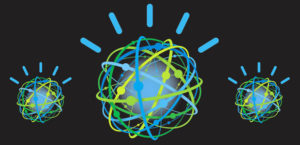
Twitter on Wednesday gave users the option of using a new algorithmically organized feed that would deliver more relevant messages — not necessarily the newest — first.
The new approach to disseminating tweets was spearheaded by Twitter’s CEO Jack Dorsey, who is under pressure because of the company’s lack of growth. Compared to other social media sites, like Facebook, Twitter is lagging behind in new user growth and stock performance. Naturally, that has put significant pressure on Dorsey.
However, the new timeline option doesn’t amount to a sea change, suggested Brian Blau, a research director at Gartner. Rather, it’s a natural evolution.
People vs. Companies
“The feature set of social media has evolved from MySpace, where everything was haphazard, to more organized content like Facebook,” Blau told the E-Commerce Times.
“Twitter doesn’t have as many social signals as Facebook, but this new interest-based content will make it easier for users to see what they want,” he said.
The new Twitter model could worry average users, because it gets dangerously close to Facebook’s pay-to-play algorithm, observed Maria Mora, content director at Big Sea Design.
Basically, on Facebook you could have 100,000 followers, but only five of them might see a post. Facebook ultimately decides who sees what, rather than allowing posts to populate organically.
“For people and brands who already have a lot of followers and organic engagement right now, it’s not going to affect them, because their content is still going to end up on somebody’s timeline,” Mora told the E-Commerce Times.
For everyday users, the implications are different. For those “who don’t have a ton of followers and a ton of engagement,” she explained, tweets “may not show up in real time the way they’re used to interacting with them.”
History May Repeat
Even though use of the new algorithm is opt-in, there’s cause for worry that this could be the first step toward de-democratization, Mora said, noting that Twitter hasn’t done a stellar job reacting to the needs and wants of its existing users.
Last fall’s hearts vs. stars debate, for example, revealed that Twitter wasn’t in touch with its members. Basically, Twitter changed the process for highlighting a post from clicking on a star icon to a heart icon. The biggest argument against that change was that just because a user took special notice of a post didn’t necessarily translate into liking it. Users didn’t want to imply they liked topics such as the Paris attacks or the migrant crisis in Europe by flagging them with hearts.
“Nobody likes the hearts over the stars, but they changed that even though that wasn’t a complaint,” Mora pointed out. “On the other hand, women have been asking for more effective ways to stop harassment, more effective reporting of people who are harassing them on Twitter — that’s just one example. But instead of listening to those needs …, they’re coming up with an algorithm that no one asked for. Here’s a way to look at your timeline that no one asked for.”
The optional reordered timeline is simply a natural progression in Twitter’s “slow calvacade of change,” countered Blau.
“There’s a general interest in real-time news,” he noted, “so now Twitter is offering the most popular feeds and tweets up front, so they don’t get lost in potentially hundreds of messages. This is a benefit to users.”
It’s likely that Twitter is trying to league up and be a more viable option for brands, Mora speculated.
As it stands, it’s not the social media site you sink ad dollars in to build brand awareness, she said, but it’s a great platform for customer service. It’s possible Dorsey’s plans to evolve this strategy will, in fact, boost Twitter engagement and help attract new users — and of course, more marketing dollars.
















































Social Media
See all Social Media